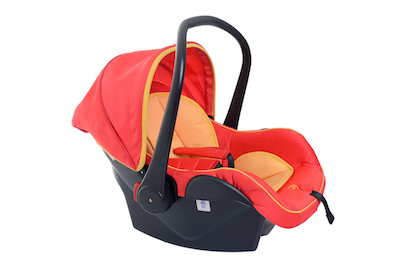What’s your car seat IQ?
There are few things in parenting as complicated as the rules and regulations of car seats. And yet, there are few things as important for the safety and well being of our kids.
 Motor vehicle crashes are still the number one cause of death for children over 3 years of age in the United States, despite a significant decrease in child fatalities over the last decade. This year alone 5,000 children and adolescents in this country will die in a motor vehicle accident, and 90,000 more will be hospitalized for injuries received in such accidents. The proper use of car seats and safety restraints are one of the best ways to protect your child from harm.
Motor vehicle crashes are still the number one cause of death for children over 3 years of age in the United States, despite a significant decrease in child fatalities over the last decade. This year alone 5,000 children and adolescents in this country will die in a motor vehicle accident, and 90,000 more will be hospitalized for injuries received in such accidents. The proper use of car seats and safety restraints are one of the best ways to protect your child from harm.
Some thoughts to keep in mind
Before we get into the specifics of car seat safety, here are a few general suggestions that will help you along the way.
Don’t rely on friends and family for information
When we have a parenting question, most of us look to friends and family to see how they’ve handled these dilemmas. While that may be helpful in some cases, this isn’t one of them. Car seat safety recommendations change rapidly as new information and crash test data becomes available, and the majority of parents aren’t very knowledgeable about current recommendations. Seek an expert to help you get the best information.
Stay up-to-date
Recommendations, laws and manufacturing practices change yearly. What was current for your first child may have changed by the time you’ve had a second. Be sure you are following current recommendations to ensure the safety of your child.
If you don’t know, ask
Don’t assume anything- car seat safety information is detailed and complex.
Five important things to know
Below, we will highlight some important information regarding car seat safety. However, keep in mind that this overview may not be able to answer all of your questions and cannot cover every detail. If you have more questions, explore some of the excellent resources listed at the end of this article.
1. Rear-facing car seats until 2 years of age
All infants and toddlers should ride in a rear-facing car seat until they are 2 years old or they have reached the maximum height or weight recommended by their car seat’s manufacturer. Once a child has outgrown their infant seat (the one with a handle that assists in carrying and snaps into a base), use a convertible car seat (one that can be used rear or forward-facing) in the rear-facing position until 2 years of age or they’ve exceeded the height and weight limit. Each car seat will have the height and weight limits listed (most currently allow a child to remain rear-facing until at least 35 lbs.)
2. Children over age 2 should use a forward-facing car seat as long as possible
Children over the age of 2 (or who’ve outgrown their rear-facing car seat) should remain in a forward-facing car seat until they have exceeded the height or weight limits of their forward-facing car seat (at least 4 years of age and 40 lbs). Many car seats can accommodate children up to 65 to 80 lbs.
3. Proper installation is important!
Every car seat has different installation instructions. Follow the manufacturer’s directions in the instruction manual carefully. You may install the car seat using the car’s seat belts OR the LATCH system (Lower Anchors and Tethers for Children). It is not necessary to use both the seatbelts AND the lower anchors, but tethers should always be used if possible for all forward-facing car seats. Newer recommendations state that if the weight of your child PLUS the weight of your car seat exceeds 65 lbs, the lower anchors of the LATCH system should not be used. The seatbelt should be used instead for those that exceed the weight limit. Check your car seat’s user manual to determine the weight of your car seat.
4. Once a child outgrows their forward-facing car seat, use a booster seat
Children should remain in a booster seat until the car’s lap and shoulder seatbelts are positioned correctly, typically when children have reached a height of 4 feet 9 inches and are between 8 and 12 years old. The use of booster seats reduces the likelihood of injuries in 4-to-8-year olds by nearly half.
5. All children under 13 years old should be restrained in the back seat
Children 12 years old and under should not ride in the front seat, especially if your car has air bags. The safest place for children under 13 years old is restrained in the back seat of the car in an age-and size-appropriate car or booster seat. Once children have outgrown the use of booster seats, they should always be restrained with both the lap and shoulder belts for optimal protection.
Resources:
Check out this excellent resource provided by the National Highway Traffic Safety Administration: safercar.gov.
For more information about car seat installation, visit healthychildren.org.
Find your nearest car seat inspection location where certified technicians can ensure that your child’s car seat is installed properly: NHTSA.gov.
If you have questions about the LATCH system, see the answers to common questions here: thecarseatlady.wordpress.com.







